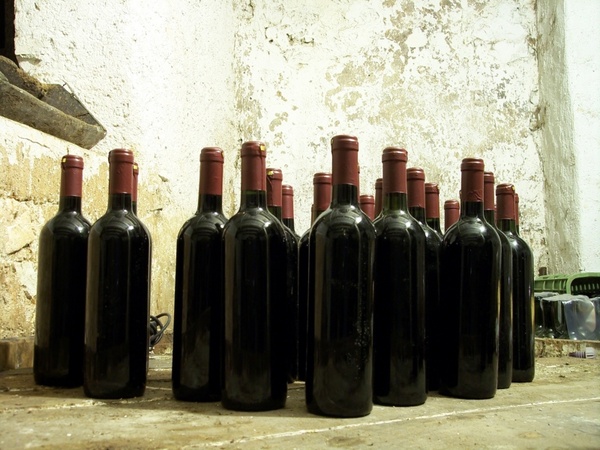
by Lorri | Oct 18, 2017 | UnCorked
Many years ago, I was given a bottle of wine that sparked my greatest wine dream: my own private wine cellar. A cellar designed with bottles lining a dark romantic room. Wines waiting among the spider webs while time works its magic. If you are fortunate enough to realize this idealistic cellar it is a significant achievement, but do we need a space in our homes to allow decades of wine aging?
One of the main reasons we buy wines to age is a simple case of supply and demand. If you let the producer, broker or wine shop store the aging wine, generally, it will cost more. Many wines in the past were produced with characteristics that needed time to mellow out and soften.
But the reality is most wines do not improve with age. Almost 98 percent of wine produced today is meant to be consumed fresh, with a shelf life of 3 to 5 years.
What makes today’s wines so different from those romantic stories of pulling out a 30-year-old Bordeaux or Burgundy that has finally reached its prime? A lot. One hundred years ago, grapes were hand harvested and put into baskets and thrown into open vats at the winery in hope Mother Nature would control the temperature and it would eventually become a fine wine.
Today, with dramatic changes in grape harvesting and winery technology, wines are crafted with more precision. Starting with the harvest of uniformly ripe grapes. Perhaps the largest impact is from “green harvesting.” A green harvest is when, a month or so before the actual harvest date, less ripe clusters of grapes are “dropped” or “eliminated.” These unwanted clusters are literally cut and dropped on the ground, allowing the vines to divert more energy on the riper grapes. Green harvesting has transformed the quality of modern fine red wines throughout the world offering the consumer a softer, finer tannin structure.
Advances in technology are allowing winemakers to pay meticulous attention to fermentation methods, timing of skin contact on the wine, temperature control, filtering and the use of small oak barrels. Each of these techniques makes red wines more approachable to drink with more integrated tannic structure.
I know some of you may be thinking, “but what about my classic Brunello or Barolos?” Those wines are the exception. But for the rest of us, those millions of other bottles lining retail shelves are ready to drink now and don’t require the coveted cellar space.
The conclusion: Unless you have strategically collected bottles intended for aging, it may be time to take stock of your collection and enjoy those bottles in the present.
by Lorri | Apr 3, 2013 | Tips, UnCorked
 I am sure we could search century-old cellar journals and find early versions of the longstanding question of when is the best time to open a bottle of wine. It’s really rather a conundrum because if you pull the cork too early you’re left with a tannic, acidic wine. Open too late and most likely nothing is left except a dried-out fruitless wine. And worse, if you open years past the appropriate life of the wine you’re stuck with a bottle of vinegar.
I am sure we could search century-old cellar journals and find early versions of the longstanding question of when is the best time to open a bottle of wine. It’s really rather a conundrum because if you pull the cork too early you’re left with a tannic, acidic wine. Open too late and most likely nothing is left except a dried-out fruitless wine. And worse, if you open years past the appropriate life of the wine you’re stuck with a bottle of vinegar.
I wish there was a magic calculation to come up with the right date to open our slumbering bottles. But that magic formula doesn’t exist. So, I offer these general guidelines for those who are questioning whether to pop the cork, or not.
Many wines are saved long past their viable life simply because of the owner’s perception of the wine label. I am asked a lot to quickly survey a collection and to offer advice regarding when certain wines are (or will be) ready to drink. A recurring theme is that the attractive French Bordeaux label leads owners – many of whom receive the bottles as gifts – to think they have a wine that should be aged longer than is necessary. A general rule is French labels stating the general and broad category of “Bordeaux AC” are best consumed within one to two years.
Opening any bottle that has been aging is a hit or miss proposition, especially if you only have one bottle. If you are serious about collecting I recommend buying by the case or at least three bottles. This helps you to determine exactly where the wine is in its maturity and offers you the opportunity to taste it in stages. If you have a case, open one bottle soon after you buy it so you have an indication of where the wine is in the aging process. Take notes and re-visit another bottle later to see how the wine is changing.
Red wines generally agewell because of tannins, the chemical substance that creates the pucker power in a young red wine, which has preservation properties. But keep in mind it’s a myth that a harsh tannic, unbalanced red wine only needs to be kept long enough to become a great wine. The same wine five years down the road will likely still be harsh and unbalanced. The same is true of the widespread thinking that young red wines in balance will not improve or change with time.
Color is one of the best gauges for red or white wines. If you are looking at a young red wine (depending on the grape) it will generally have a more purple rim color. As the pigments oxidize they are precipitated along with the tannins becoming more ruby and then gradually a brownish color. Storage conditions, the grape and method of production can also have color impact.
FOR NOW
- 2010 Swinto Old Vine Malbec, Argentina (about $40 retail) to keep for a couple of years.
FOR LATER
- 2007 Bell Vineyards Clone 6, California (about $80 retail) to taste now and until perfection, approximately 8 to 10 years.
by Lorri | Jan 30, 2008 | UnCorked
Collecting wine is a unique hobby. Some collect for investment, others for personal use and some simply for the pure love of wine. As a collector, the following tips apply whether you have two cases or 2,000 cases.
Develop a relationship with your retailer. There are hundreds of wines that could be missed at your local wine shop. Inform your retailer that you are collecting and express your styles, taste and which wines you want to add to your collection.
Separate your cellar collection into categories: everyday drinking wines, those for a special occasion and those you consider the most valuable, either for monetary or sentiment. Place a note on these bottles as a reminder to others that they are of special value to you.
Don’t be consumed with buying “cult” wines. Consider wines from recent travels, wines shared by other collectors or those savored and enjoyed at memorable dinners. Such wines in your collection will become the most treasured of a lifetime.
Know what you have in your cellar. Many collectors miss the purpose of collecting by letting wines deteriorate before opening them. Nothing is more disheartening than not enjoying bottles in their prime simply because they are overlooked in a dusty corner.
To save money when collecting, buy wines by the case. By doing so, you will be able to taste one of the bottles and assess how it is developing in the aging process, and you’ll have the remaining bottles to enjoy.
Keep an organized inventory. It can range from a penciled-in ledger to widely available, high-tech computer programs.
And last, serve the bottles you like to friends and family who enjoy wine, but share your fabulous bottles only with people who truly love wine.
THE VALUE
- 2002 BV Coastal Estates, Beaulieu – Cabernet Sauvignon, California (about $10, retail)
Georges de Latour Private Reserve from the same producer, Beaulieu Vineyards, is known as one of the most collected Cabernet Sauvignons in California. This wine regularly receives high scores and rave reviews from critics and costs about $120 retail. The BV Coastal Estates Cabernet may not have the same pampering in the vineyard and winery or share the premier real estate address in California, but it continues to offer an exceptional value.
This wine is a ruby color with aromas of black pepper, cherry and hints of mint. The medium-bodied palate offers tastes of spice and chocolate ending with a clean finish.
THE SPLURGE
- 2004 Chateau Lascombes, Margaux Bordeaux (about $78, retail)
The Lascombes boasts Second Growth rating in the prestigious Bordeaux classification system and is a wonderful addition to any wine collection. Lascombes, as expected when it is from a reputable wine maker, has deep Bordeaux roots which began in the 18th century when Jean Lascombes, a Bordeaux Parliament councilor, bought the vineyard. Today this property still produces wines that receive some of the highest accolades from the world’s most respected critics.
The color is deep ruby. The aromas are intense and expressive with notes of dark chocolate, coffee beans, deep rich berry fruit and a touch of licorice. The palate offers a lush, full-bodied mouth feel of blackberry, rich plums and spice, and its long, lingering finish mingles with a taste of vanilla.

 I am sure we could search century-old cellar journals and find early versions of the longstanding question of when is the best time to open a bottle of wine. It’s really rather a conundrum because if you pull the cork too early you’re left with a tannic, acidic wine. Open too late and most likely nothing is left except a dried-out fruitless wine. And worse, if you open years past the appropriate life of the wine you’re stuck with a bottle of vinegar.
I am sure we could search century-old cellar journals and find early versions of the longstanding question of when is the best time to open a bottle of wine. It’s really rather a conundrum because if you pull the cork too early you’re left with a tannic, acidic wine. Open too late and most likely nothing is left except a dried-out fruitless wine. And worse, if you open years past the appropriate life of the wine you’re stuck with a bottle of vinegar.